As a landscape photographer, the scouting process is essential for finding the perfect locations to capture stunning images. However, with so much information to keep track of – from GPS coordinates to lighting details – it can be overwhelming to organize all of this information in a way that is both accessible and efficient. Fortunately, there’s a tool that can help: Notion. The Notion is a popular productivity and organizational application that has become a favorite among professionals in a variety of fields. In this article, I’ll show you how Notion can be used specifically for landscape photography scouting, and how it helps me to streamline my process and maximize productivity.
You can check Notion at: www.notion.so
My Notion Photography Planner
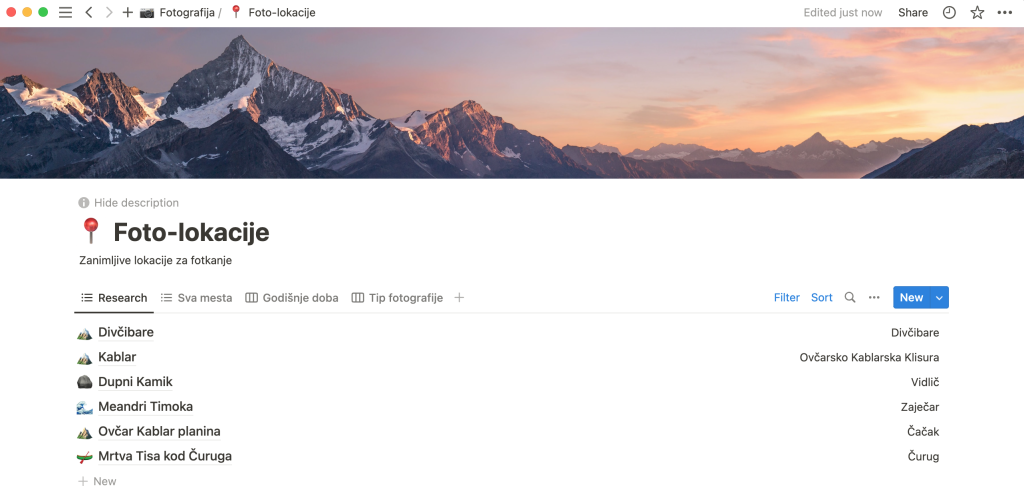
Database Foto-lokacije (eng. Photo-locations) is my main database where I store my photography locations. It’s divided into groups known as views named: Research, All places, Period of the year, and Photography type.
Research – List view where I store new locations that need to be reviewed, and more info gained.
All places – List view where all my locations are stored.
Period of the year – Board view where all my locations are grouped by the period of the year when ideas can be realized.
Photography type – Board view where my locations are sorted by the things I like to shoot. For example, ICM, Landscape, Woodland, Lake, and Mountain.
Each location from the database has the following properties:
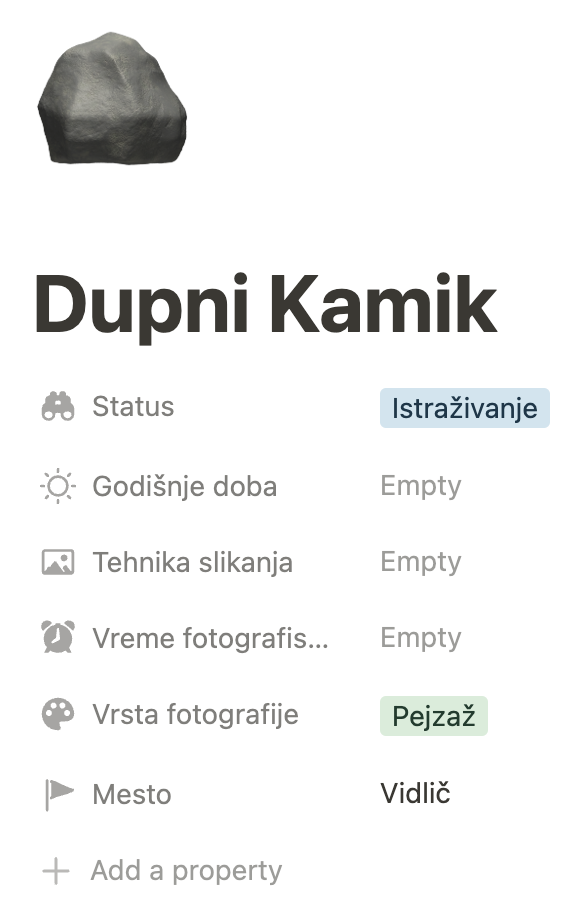
Status – As the name says, it describes the status of the location. It has 4 values, which are: Scouting, Planning, For shooting, and Done. Having status in mind I can easily see where the next location should be or what idea should be realized.
Period of the year – Period of the year, to describe better when the idea is possible for realization.
Shooting technique – Shooting technique that can be used on location, for example, minimalism, ICM.
Time of shooting – The time when an idea can be realized, sunrise, sunset, night, blue hour, golden hour.
Photography type – Photography type, can be landscape, woodland, tree, or cityscape.
Location – Name of the location where an idea will be realized.
As I described in my previous blog post about location scouting, I like to write down everything about the location and create checklists that allow me to be consistent and prepared every time. In that manner body of each location looks like this:
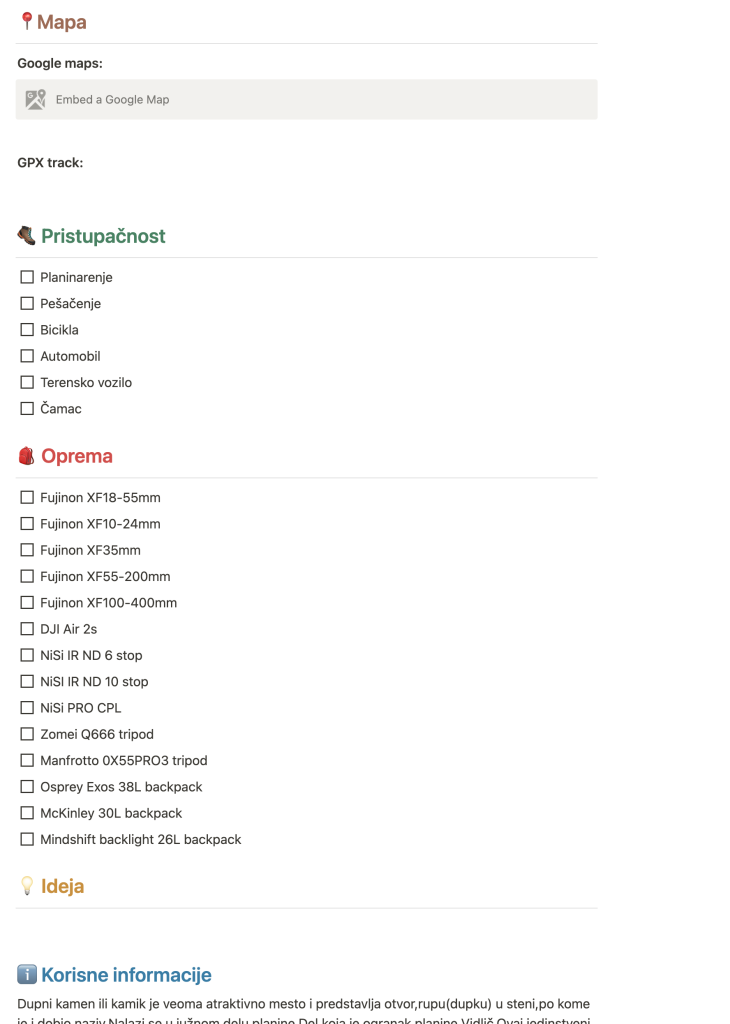
Map section – First on my list is a map, where I store locations from google maps, GPX tracks, and Wikiloc tracks. Everything about the map and location from that perspective might help me.
Accessibility checklist – The second item on my list is the accessibility checklist. Items that I store here are hiking, walking, bike, car, 4×4 vehicle, and boat. It helps me. This checklist allows me to prepare my plan further by knowing how to visit that location.
Gear checklist – The third section on my list is about the gear which I will bring with me to the location and take photos. It contains a camera, lenses, filters, tripods, a backpack, and sometimes camping stuff too.
Ideas – Forth section on my list is about ideas that I have in mind, which photos I should create, and all about it. I usually put photos from books, social networks, videos, and all other locations which can help me to realize my idea better.
Useful information – The last section on my list, is about other useful stuff like parking locations, tickets, food places, hotels, apartments, etc.
Gathering data inside Notion
From webpages
Let’s say you learn of a location from a website that has details about the hike, time of the year, photos, etc. If you simply bookmark this page, there is no guarantee that it will still be there next time when you finally need the information, as websites come and go. The solution is to use the Web Clipper extension for your particular browser. When you click the clipper you will convert the whole webpage into a Notion page. Once you have this saved into Notion you can then highlight important text on the page so it is easy to find that information later. You can also add tags or more items to this note.
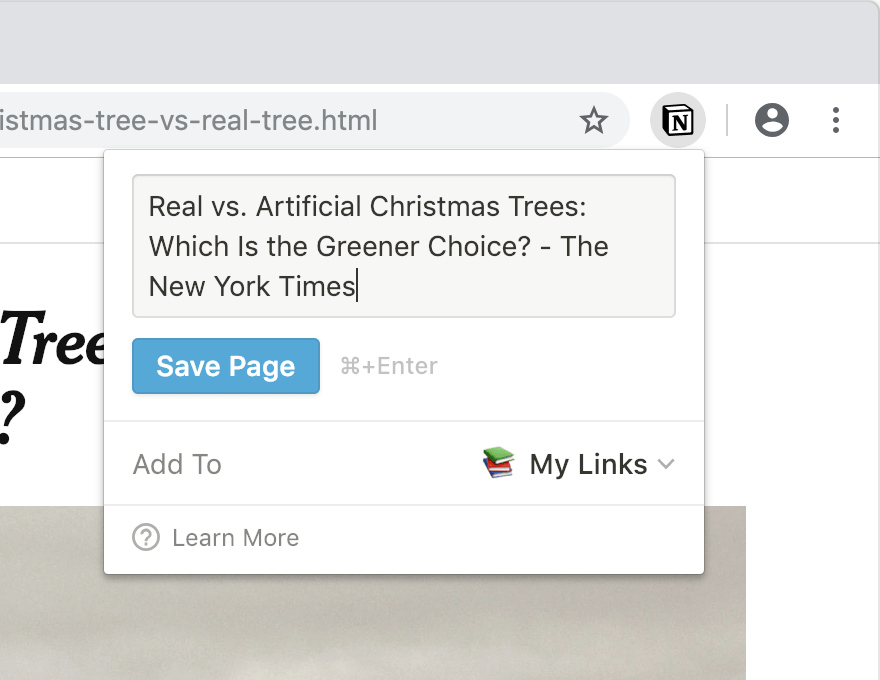
If Website has a GPX file associated with it that I want to import into my preferred GPS app on my iPhone, Gaia GPS. Rather than emailing this file or sending it over AirDrop, I like to attach it to a note in Notion. You do this by downloading the GPX file to your computer, dragging and dropping the resulting file into your note, and now that file is also saved forever. I can then open Notion on my iPhone, go to this note, click on the GPX file, and copy it to Gaia GPS.
From Social Media
When you see a location on social media that you want to research more, it can be challenging to save this information due to the way smartphone apps work. Facebook and Instagram want to keep you inside their app, so they do not let you export to Notion. Albeit crude, the best solution I have come up with is to take a screenshot of your phone’s screen (click home & power on iPhone, sleep & volume down On Android), now go into Notion, create a new note and insert the screenshot you just saved, add notes, etc.
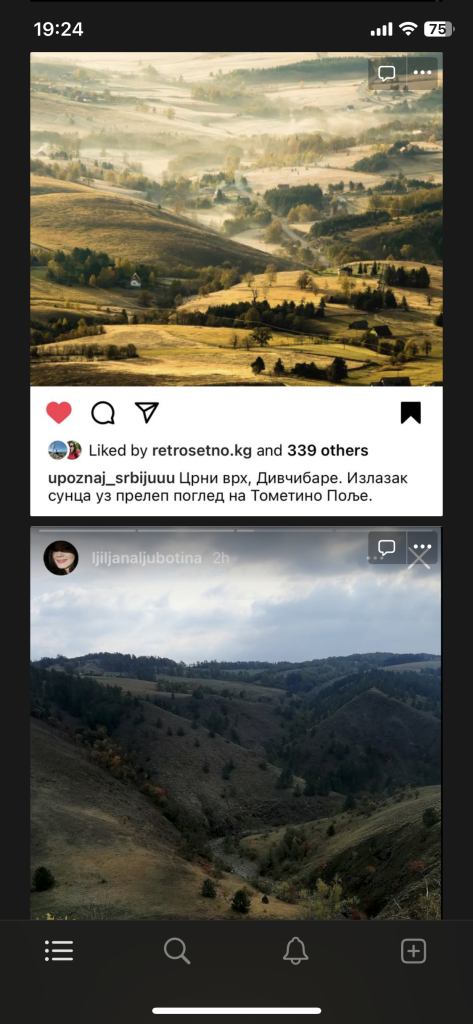
From books and maps
Saving books and maps into Notion is as simple as using the camera on your phone and attaching photos to Notion. I like to add text and arrows on photos before attaching them inside Notion.
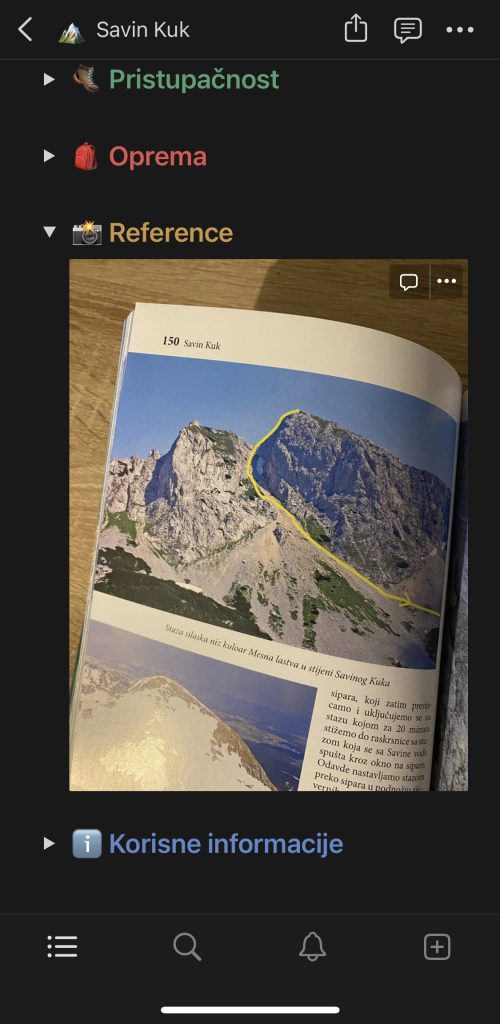
On location
During location scouting I most of the time use Gaia GPS and PhotoPills applications. From PhotoPills I usually write down sunrise, and sunset times, the direction of the sun, moon, moon phase, and other stuff that PhotoPills support. Besides that, Gaia GPS records photographic waypoints, tracks, and parking locations. Without storing that data in a single place everything ends up being wasted or lost, with no positive outcome or result. That’s the part where Notion comes in. Unfortunately, PhotoPills does not support sharing sun/moon data but what I like to do instead is to create a screenshot and save it to the Notion page. On the other hand, Gaia exports tracks and waypoints as GPX files, which is perfect, but Notion has one flaw. In the free version maximum file attachment size is 5MB. So I have a workaround for this, by uploading the GPX track in my google drive and putting the link to the track inside the page.
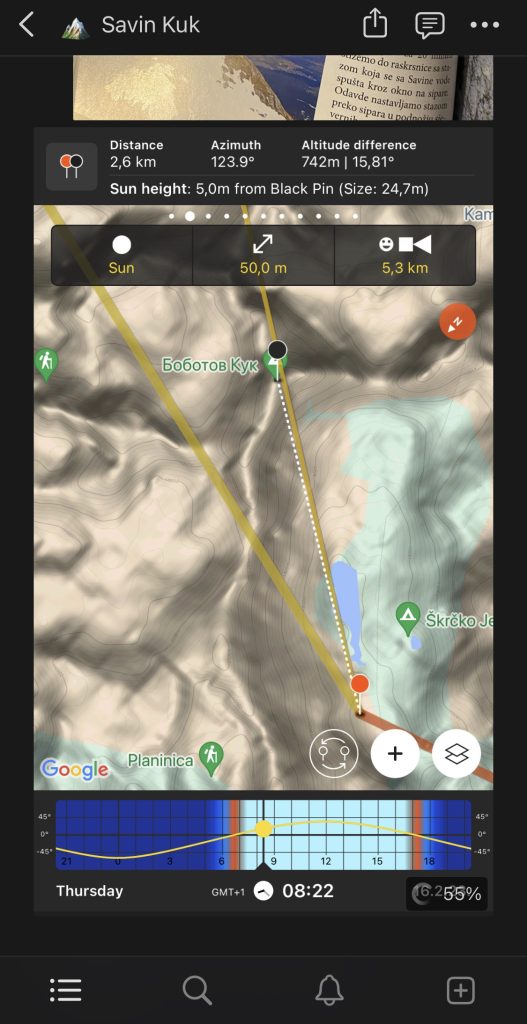
Ending words
A notion is a powerful tool for landscape photography scouting that can help photographers organize all the information they need to plan and execute successful photography trips. With Notion, we can create a database that includes important details like GPS coordinates, photos, sunset and sunrise information, and descriptions of potential locations. By organizing this information in one place, we can quickly and easily access it when planning our trips and scouting potential locations.

